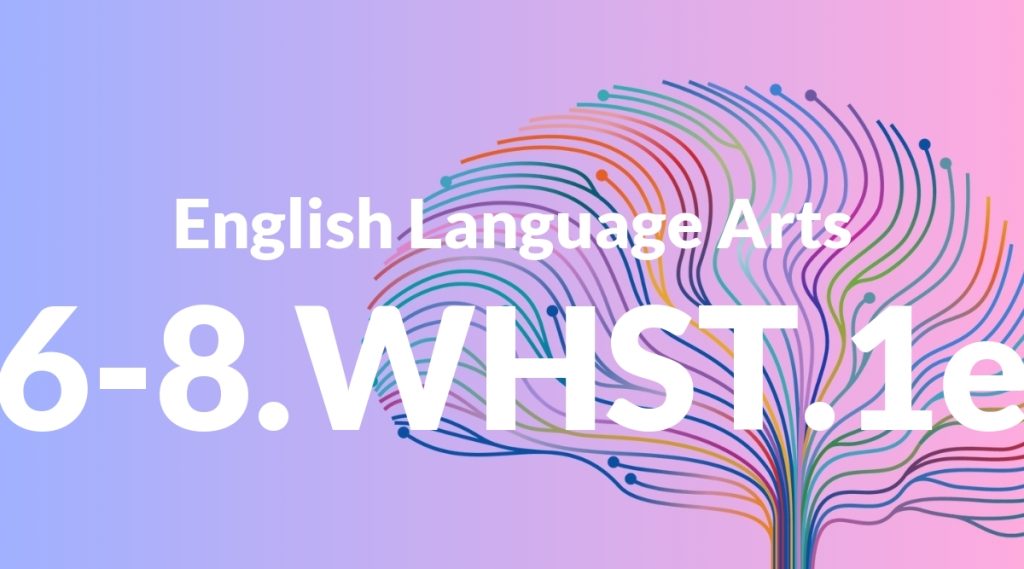Standard: 6-8.WHST.1e – Provide a concluding statement or section that follows from and supports the argument presented.
Grade level: Grade 6-8
Subject: English Language Arts
Domain: Writing: History, Science & Technical Subjects
Teacher Overview
This standard emphasizes the importance of providing a strong concluding statement or section that supports the argument presented in a piece of writing. It is crucial for students to understand that a well-crafted conclusion not only summarizes the key points but also reinforces the overall argument, providing a sense of closure and completeness. Students should understand the basic structure of an argument, including how to present claims and evidence. They should also be familiar with the components of a well-organized paragraph and have experience writing introductory and body paragraphs.
After mastering this standard, students will be able to write more cohesive and compelling arguments. They will develop skills in synthesizing information and drawing logical conclusions, which are essential for advanced writing tasks in high school and beyond.
Common Misconception 1
A common misconception is that a conclusion is merely a summary of the main points. This is incorrect because a strong conclusion should provide more than just a recap; it should offer a final insight or perspective that reinforces the argument.
Intervention 1
An effective intervention is to model strong conclusions that summarize key points while also offering a final thought or call to action. Provide examples and non-examples to illustrate the difference.
Common Misconception 2
Another misconception is that a conclusion does not need to connect back to the argument. This is incorrect because a conclusion should explicitly link to the main argument to ensure coherence and logical progression.
Intervention 2
To address this, encourage students to revisit their thesis statement and main points when crafting their conclusions. Use graphic organizers to help them see the connections.
Prerequisite Knowledge
Students should understand the basic structure of an argument, including how to present claims and evidence. They should also be familiar with the components of a well-organized paragraph and have experience writing introductory and body paragraphs.
Subsequent Knowledge
After mastering this standard, students will be able to write more cohesive and compelling arguments. They will develop skills in synthesizing information and drawing logical conclusions, which are essential for advanced writing tasks in high school and beyond.
Instructional Activities
- Analyze strong and weak conclusions in sample essays.
- Practice writing conclusions for different types of writing assignments.
- Use graphic organizers to plan and connect conclusions to the main argument.
- Peer review to provide feedback on the effectiveness of conclusions.
- Role-play debates and focus on crafting strong concluding statements.




